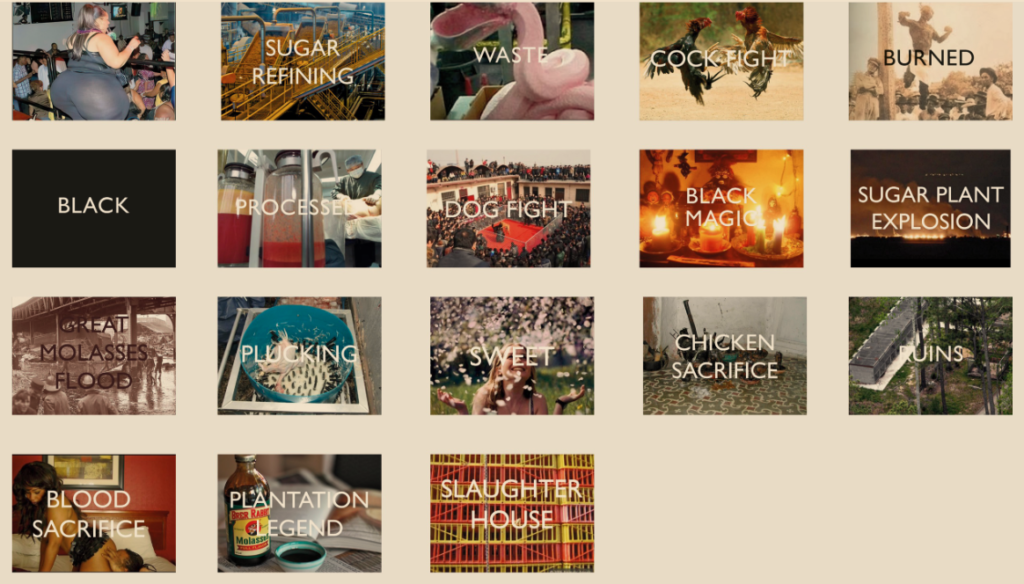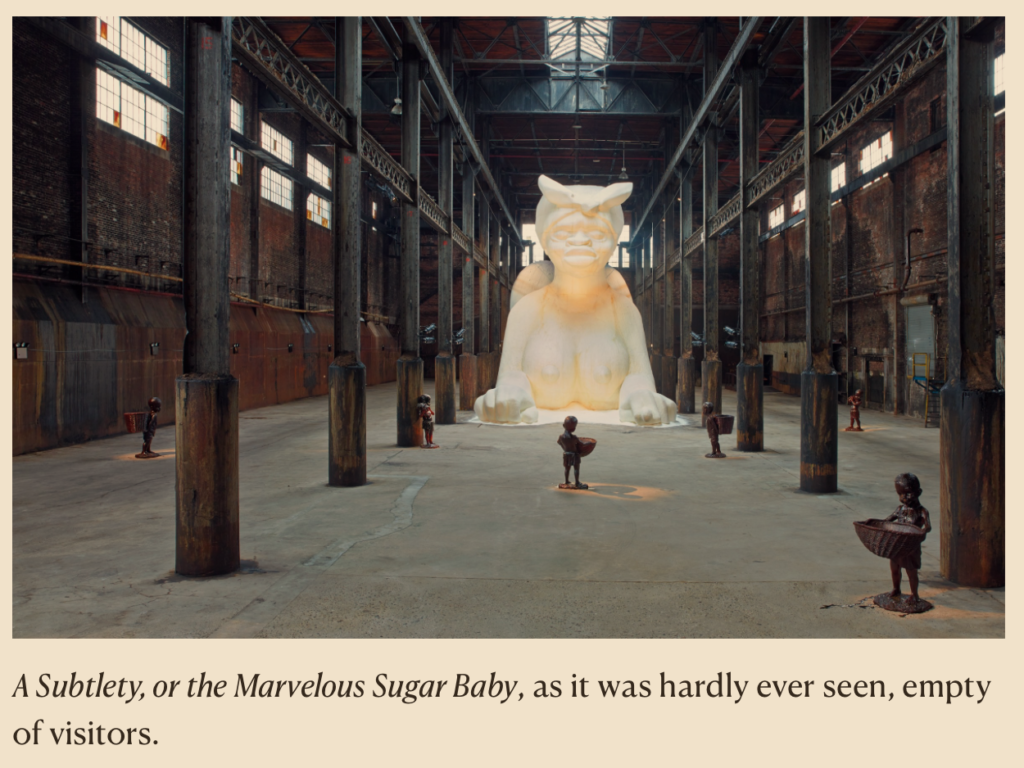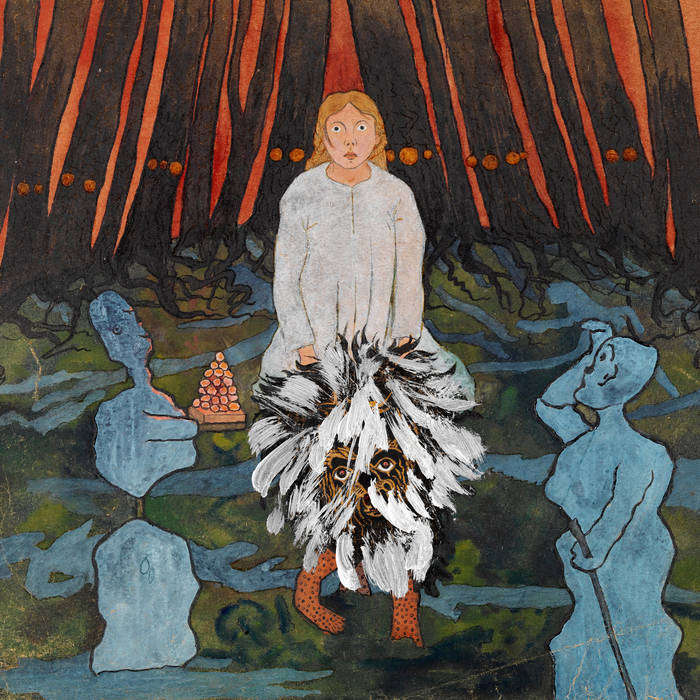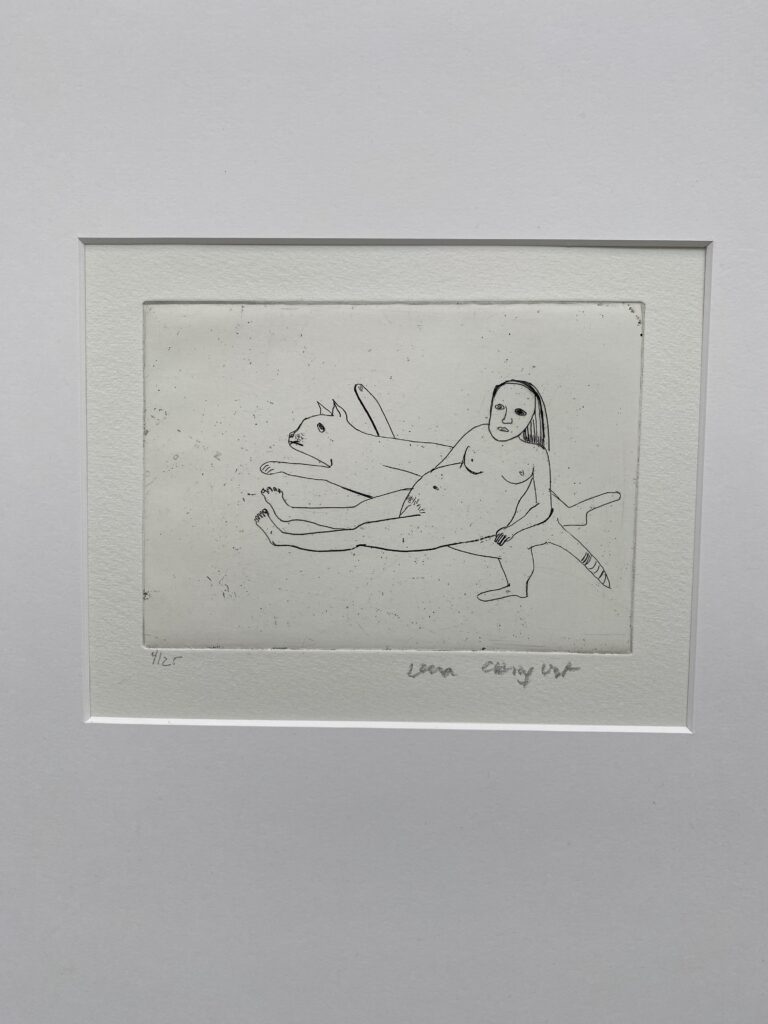
Uncategorized
There are 467 posts filed in Uncategorized (this is page 2 of 47).
Iiiiii
Det finns en lätt överdrift i det här stycket, men det är ändå något att fundera över:
In AI, we are in this odd situation where a technology of larger impact than anything built before itself (possible exception: fire) is being speed-delivered into the world and those that are building it are calling out its issues as quickly as it is being developed, but relatively few people are available to work on it.
Jack Clark, “Import AI 370: 213 AI safety challenges; everything becomes a game; Tesla’s big cluster“, 29 april 2024
Apropå ett större papper där ett stort antal forskare har identifierat och sammanställt utmaningar och frågor att besvara för att stora språkmodeller ska bli säkra och pålitliga i en samhällskontext.
Subtil process
Adam Moss bok The Work of Art inleds med att konstnären Kara Walker berättar om hur hennes verk “A Subtlety, or the Marvelous Sugar Baby, an Homage to the unpaid and overworked Artisans who have refined our Sweet tastes from the cane fields to the Kitchens of the New World on the Occasion of the demolition of the Domino Sugar Refining Plant” kom till.
Från en tidig PowerPoint-skiss:

It was a way of synthesizing material, but it also has a rhythm and poetry to it. I was gathering images that included the chickens but then went into voodoo and rum and sugar and the transatlantic slave trade. I started to read about the process of sugar refining, and that it’s not a given that sugar should exist in the world.
Något som gjorde uppdragsgivarna lite nervösa, givet att verket skulle bo i en gigantisk lagerlokal tidigare använd som sockerfabrik:
And so the PowerPoint is what I gave Creative Time. I said, “I think I’m getting closer.” And they were like, “What is it, exactly? Is it going to be a slideshow?” And I said, “No, no, this isn’t the piece!”
Om insikten vad det skulle bli:
And here’s what happened: I was on the Q train. And I was reading the Sidney Mintz book [“Sweetness and Power: The Place of Sugar in Modern History” från 1985]. And there’s a section where he talks about the “subtleties” – these special decorative [sugar ornaments] exclusively for kings, for the celebration of weddings…and you know, we’re so used to fucking sugar we don’t even realized how special sugar is…
And I was just like, Oh, it’s a sugar sculpture!
And I realized the Sphinx was the perfect sort of ruin. And that was the big moment.
Och sluresultatet:

Lena Cronqvist, april 2024
Svanholmen, april 2024
Taubenblau
Gruvarbetaren Bruno Schröder samlade ihop till ett imponerande privatbibliotek med sina 70 000 böcker. Ett reportage i Die Zeit (archive.today) berättar om den hängivne samlaren. Inte minst var han en stan på distans av Arno Schmidt, omnämnd i ett tidigare Missiverna. Schröder verkade ha det mesta som Schmidt skrivit, både i tryck och för hand. Inte nog med det, han verkar också ha återskapat duvblåfärgade Schmidts hus och bosatt sig i med alla böckerna. Läser jag verkligen den från tyska till engelska automatöversatta artikeln rätt? Det hela verkar vara lite av en gåta.
Arno Schmidt hade ju sitt kartotek med lappar – Zettelkasten – för sin speciella research- och kompositionsteknik (se bild). Det är kittlande att tänka sig hur Brunos bibliotek var en slags invertering av Schmidts lappsystem, men ur en läsares perspektiv. Tanken är inte min, utan journalisten Benjamin Quaderers:
Vielleicht, denke ich, als ich den Zettelkasten vor mir betrachte, folgt das, was Bruno Schröder mit dem Anlegen seiner Bibliothek getan hat, einem ähnlichen Prinzip. Vielleicht hat er mit dem Zimmern der Regale, dem Sortieren und Systematisieren der Bücher, dem Durchstöbern der Vorschauen, Verzeichnisse und Kataloge ja genau dasselbe getan. Er hat einen Zettelkasten in Überlebensgröße gebaut. Während Arno Schmidt seinen Zettelkasten in ein Werk hat münden lassen, ist im Falle Bruno Schröders der Zettelkasten das Werk selbst. Vielleicht ist das der Unterschied zwischen Autor und Leser.
Benjamin Quaderer, “Schröders Traum”, Die Zeit, 22 april 2024
Apropå stans så går det inte att inte nämna Tavi Gevinsons PDF “Fan Fiction“, som jag förstår vara som en slags pastisch på Vladimir Nabokovs Pale Fire. Poeten John Shade är utbytt mot Taylor Swift och den besatte Charles Kinbote av…Tavi själv? Jag får läsa. Bara läst “‘Pale Fire’ (Tavi’s Version): Notes on Taylor Swift and the Literature of Obsessive Fandom” än så länge.
Simberg i tiden
Den finländske målaren Hugo Simberg (1873-1917) är aktuell både som VR-app (via: Lynn Chernys Things I Think Are Awesome) och på omslaget till gglums album “The Garden Dream“.

Laddar kartografi
Rob Horning har också läst den där Jameson-föreläsningen och är inte imponerad:
It’s almost shockingly incoherent, and I would have assumed the student who assembled it was carrying a grudge against Jameson if Jameson himself hadn’t apparently authorized it. Maybe he thought it would help weed some students out of future seminars, like when professors act like tyrants during the first class of the semester or load their syllabus with rules that have no intention of enforcing.
Rob Horning, “So-called well-meaning“, 5 april 2024
Huvuddelen av Hornings utskick handlade egentligen om “Cartography of generative ai“, som jag mest orkade göra en animerad gif av när PDF:en laddade:

Frankfurtförskolan
Apropå Adorno så drar jag mig till minnes en anekdot jag läste om i Philipp Felschs utmärkta The Summer of Theory, om när situationister i München och andra universitetsstäder 1964 tidstypiskt klistrade upp affischer på universitetsbyggnader med citat från Upplysningens dialektik:

På affischerna ombads de som ville veta mer att kontakta “Th. W. Adorno, Kettenhofweg 123, 6 Frankfurt/Main”. Adorno själv var lyckligt ovetandes om det tills universitetet i Stuttgart hörde av sig med en faktura för städningen som de ville att han skulle betala. Tydligen anmälde Adorno det hela till polisen och en Dieter Kunzelmann och en Frank Bockelmann dömdes till böter för upptåget (se Lorenz Jäger, Adorno: A Political Biography, s.195).
(Nämnde Felsch har förresten en bok om Jürgen Habermas ute, på tyska bara än så länge).
Seminarieteater – Jameson/Adorno
Konstnären och forskaren Octavian Esanu har gjort det akademiska seminariet till en teaterföreställning när han i detalj har transkriberat och försökt fånga så mycket detaljer som möjligt från en seminarieserie som Fredric Jameson höll på Duke University 2003, om Theodor Adornos Aesthetic Theory.
Här är ett lite längre utdrag som exemplifierar det bra, där pauser, lite tystare kanske muttranden, ljuder av krita på tavlan och till och med hur en vissla från ett tåg som passerar registreras. Det inleds lite komiskt, med en kanske besviken Jameson konstaterar att ungdomen inte längre kan läsa tyska.
How many people read German? Let’s see, raise your hands…
[Silence.]
Well, that’s a pity because it would be nice to look at his work in German. But the… [Pause.] But whether all his books are still in print, or translated, I don’t know. The important book on Schoenberg is called The Philosophy of Modern Music… [Quietly: Philosophie der neuen Musik] and there are also little books he wrote on Mahler, on Berg, hmm, a sort of memoir of Berg.16 [Pause.] There is now an entire collection coming from Verso, a collection of his musical books, and what is that one called… [To himself: I was looking at it this morning, well I can’t remember it now but is very new… (Pause).] And finally, there is also the posthumous work on Beethoven that he was working on.17 You will see that Adorno is never philosophically continuous, as you can observe this in Aesthetic Theory, which proceeds by blocs of themes. There are paragraph breaks that correspond to various themes, and then you go on to another theme, and in a way the same thing is being said in all of those themes… [Choo-choo. Amtrak train whistle in the distance.] So, clearly there is a change of topic, and a sort of a shifting of gears. The fact that Beethoven essay was unfinished is maybe not necessarily the worst thing and there are a lot of other essays… [Choo-choo. Amtrak train whistle loud.] There are a lot of musical references in here. I don’t know to what degree we need to look into those. There are fewer references to the visual arts in Adorno and that we will have to make up for ourselves by trying to see how his aesthetics works across various arts. And in literature… [Pause.] Suhrkamp used to publish these little volumes, a little smaller than this [Holds Aesthetic Theory up], and there were four or five of these little volumes called Noten zur Literatur. Mm-hmm, and those have all been translated now, as… [Chalk on the blackboard] N-O-T-E-S T-O L-I-T-E-R-A-T-U-R-E.18 But these texts are not just on literature, there are also musical essays, there is an essay on essay… [Quietly: “Essay as Form,” which I hope we will talk abouant in this seminar] and others ones on Beckett, on surrealism, and so forth. And there are a number of literary references there, which I don’t… [Pause] you can decide later on for yourself whether you think that this perspective on the arts allows for criticism. Proust was very important to him but is he a good critic of Proust, I’m not sure about that… [Quietly: you can look at his Proust essay and decide for yourself.] There is a wonderful little essay on Dickens’ The Old Curiosity Shop and there are other titles as well. The German classics were important. He had a running kind of relationship with Benjamin, and they exchanged many letters which have been now published.19 [Clears throat.] Adorno read to Benjamin chapters of his work on Wagner, which I believe has also been translated as In Search of Wagner… [Quietly: Versuch über Wagner.]20 Maybe that would be also a place to look at Wagner’s work, where he illustrates the problem of value plus ideology, and if anybody knows anything about Wagner, they know about the role that’s played in it by a certain kind of nationalism, a certain kind of anti-Semitism, and all the rest of it. This is certainly one of the problems that comes up in Aesthetic Theory at a certain point, and we will look at that when time comes. But there is the other book on Wagner, which Adorno had connections with… [Mumbles indistinctly.]21 But overall music was very important for Adorno, and we will have a few sessions dedicated exclusively to music theory. Music also runs through Mann’s novel, which we will discuss.
Octavian Esanu, “[Door creaks open. Footsteps] Fredric Jameson’s Seminar on Aesthetic Theory“, The Public Domain Review, 2 april 2024
Hela seminariet finns i boken Mimesis, Expression, Construction: Fredric Jameson’s Seminar on Aesthetic Theory och jag kunde inte låta bli att läsa vidare i den. (Repeater Books har för övrigt gett ut något liknande tidigare i Postcapitalist Desire: The Final Lectures, där Mark Fishers sista kurs innan han dog ges lite samma behandling, om än inte fullt lika noggrant). James pratar där i början av kursen och ger som råd till studenterna om hur de ska läsa Aesthetic Theory under kursen, en slags studieteknik för det här uppenbart svårlästa verket (utgivet på svenska 2019 av Glänta):
Sometimes, I ask you to make a sort of journal of your readings, and just keep notes on your computer, which you regularly turn in, and which are in effect noticing things of interest, turns of phrases that you find interesting, cross-references that appear important to you, and so forth. I asked you to make a note of anything that catches your attention, but I think we won’t do it this time. What I was thinking… [Cough-cough. Jameson] is that you could on the other hand… [Quietly: that’s why I said earlier that you should not bother with the book’s index of themes] but try and make a kind of conceptual index for yourselves and send it to me. As you’re doing your reading of Aesthetic Theory, and as you noticing a theme appearing, invent a category, and a page number for that topic, and make a note on the appearance of the topic that could go a little bit beyond a word and page number. You can say, for example, here he discusses aesthetic autonomy in terms of this and that, hmm… [Hesitates], then here he attacks Kant, here he is engaging with Benjamin… [Pause] and so on and so forth. That way you would not be doing this index in a chronological way but rather in terms of themes that you are mapping out, as you’re going through the book. I think you may find that this method can give you an interesting way to engage with Adorno…
[Audience murmuring.] If the progression of the argument is the melody, so to speak, these themes are the harmonics of these melodies.
Strax därefter räcker en student upp handen:
[Student raises hand.]
JAMESON: Yes.
STUDENT: This conceptual index can be handed…
JAMESON: Come again. Can be…?
STUDENT: Can be handed over instead of being sent by email?
JAMESON: [Surprised.] Oh, people don’t use computers anymore, yes, of course, sure, sure, yes, print it and hand it to me.
[Long pause.]


